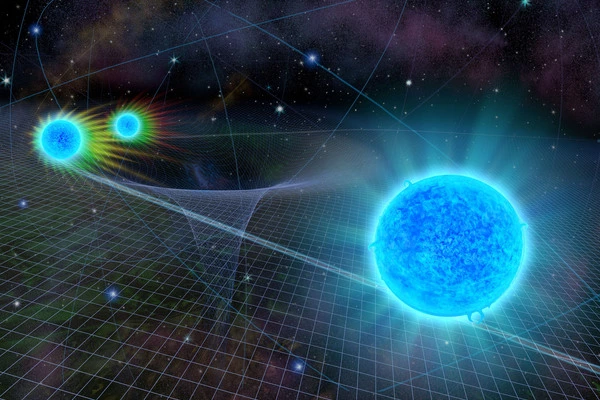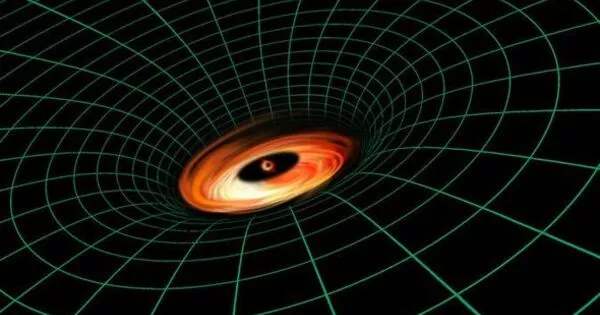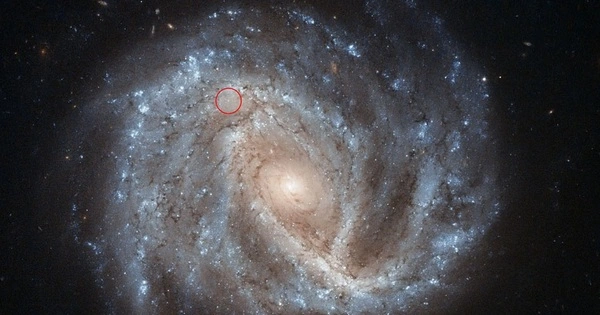Black holes are incredibly dense regions of space with such strong gravitational pull that nothing, including light, can escape once it gets too close. They can form from the collapse of massive stars at the end of their lives, or by the collision of smaller black holes. Black holes can also grow in size by absorbing matter, such as intergalactic gas, that gets too close to them. This process is known as accretion, and it releases a tremendous amount of energy in the form of radiation, which can be observed by telescopes. However, the process is also incredibly efficient, meaning that a large amount of the matter that falls into a black hole is never converted into radiation and instead gets sucked into the black hole itself.
The University of Southampton’s research has revealed how supermassive black holes (SMBHs) feed on gas clouds that travel hundreds of thousands of light years from one galaxy to another. An international team of scientists has discovered a critical link between the interaction of neighboring galaxies and the massive amount of gas required to ‘fuel’ these massive, super-dense space phenomena. Their research will be published in the journal Nature Astronomy.
A black hole can be created when a star collapses, squeezing matter into a relatively tiny space. This increases the force of gravity to a point where nothing can escape, not even light — hence the name. Some black holes are gigantic, with masses millions of times greater than our sun, emitting enormous amounts of energy. These are known as ‘supermassive black holes’ and exactly how they are formed or gain enough fuel to power themselves is still a mystery.
The work that we carried out shows the presence of gas that is misaligned from stars is associated with an increase in the fraction of active supermassive black holes. Since misaligned gas is a clear sign of a past interaction between two galaxies, our work shows that galaxy interactions provide fuel to power active supermassive black holes.
Dr. Sandra Raimundo
Dr. Sandra Raimundo, an astronomer and lead researcher at the University of Southampton, comments: “The gradual accumulation of gas from the environment around supermassive black holes fuels their activity. When supermassive black holes capture gas, they can cause the centers of galaxies to shine very brightly, and it is thought that this process has had a significant impact on how galaxies look today. Astronomers are still puzzled as to how SMBHs get enough fuel to sustain their activity and growth, but our research provides a step toward understanding.”
The Southampton scientist, working with researchers at the universities of Copenhagen and California, used data from the 4-metre Anglo-Australian telescope in New South Wales, Australia* to study the orbits of gas and stars in a large sample of more than 3000 galaxies. They identified those with the presence of what is known as ‘misaligned’ gas – in other words, gas which rotates in a different direction from the stars in the galaxy, signalling a past galaxy interaction. They then found that galaxies with misaligned gas had a higher fraction of active supermassive black holes.

The findings revealed a clear link between misaligned gas and supermassive black hole activity, implying that the gas is transferred where two galaxies collide, meanders vast distances through space, and then succumbs to the massive gravitational forces of the supermassive black hole, being drawn in and swallowed up as a vital source of fuel. Astronomers have long suspected that a merger with another galaxy could provide this source of gas, but direct proof has been difficult to come by.
Dr Raimundo explains: “The work that we carried out shows the presence of gas that is misaligned from stars is associated with an increase in the fraction of active supermassive black holes. Since misaligned gas is a clear sign of a past interaction between two galaxies, our work shows that galaxy interactions provide fuel to power active supermassive black holes. This is the first time that a direct connection has been observed between the formation and presence of misaligned gas and the fuelling of active supermassive black holes.”
Dr. Marianne Vestergaard, a study co-author, says, “What is exciting about these observations is that we can now, for the first time, identify the captured gas and trace it all the way to the center where the black hole is devouring it.”
The scientists hope to expand their research and use their findings to calculate how much of the total mass of supermassive black holes grew from this mechanism and how important it was in the early Universe.
















